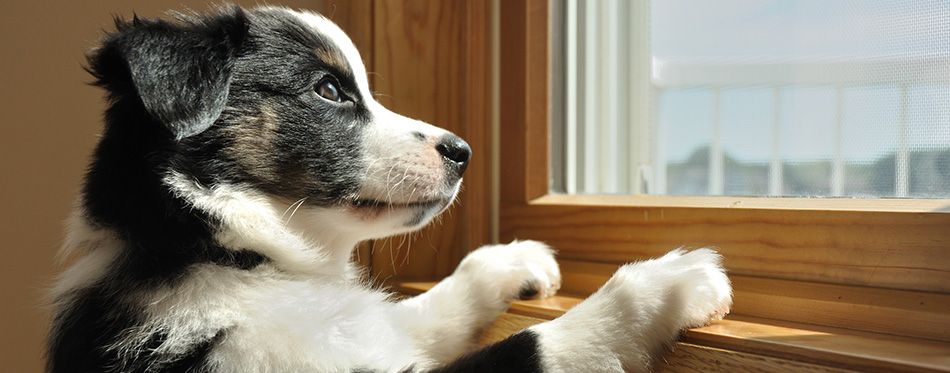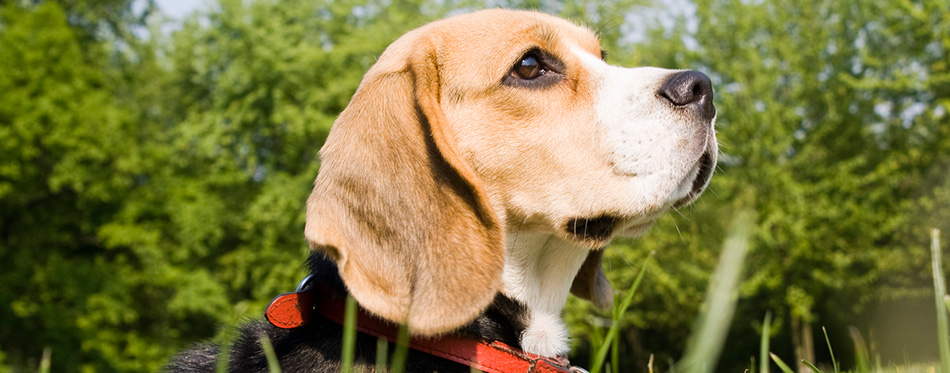When you invite a pet into your family, you’ll often notice that their grooming habits can, at times, be a little…odd. This is usually just one of those quirks that we get to know and love, and can even lead to some amusing clips on YouTube. It can, however, also be a little bit of a headache at times. For example, if you see your dog licking their paw, you might assume they’re just cleaning themselves, or have discovered something tasty between their paws- but, if they’re doing it excessively, you may begin to worry about their paw-licking habits.
Don’t worry yourself too much, as there can often be innocent explanations to this. Although we always recommend getting in contact with your vet about any concerning behaviour, we’ve compiled a quick list of symptoms to look out for, reasons for your dog licking their paws and how you can help.

When To Worry About Your Dog
This first thing you should know is that all dogs lick their paws from time-to-time, and this is nothing to worry about on it’s own. However, if you do spot this happening, keep an eye on the following behaviours and symptoms, which can indicate some complications:
- Diarrhea
- Vomiting
- Lethargy
- Wounds
- Pimples
- Scabs or crusts
- Lack of appetite
- Licking other, unusual areas of the house, such as walls and floors.
If you do spot any of these, ring your vet and book your pup in for an appointment. These can be a bit of a tell-tale sign toward some of the illnesses that we’ll discuss in more detail, below.
Reasons Why Your Dog Might Be Licking Their Paws
- Allergies
The most common cause for paw-licking in dogs is simply down to allergies. This could be something that they’ve stepped in or been in contact with, or it could be something they’ve eaten that is causing their skin to become itchy- and their paws are the easiest and quickest place they can scratch.
- Cuts
This one should be relatively plain to see, if there is a clear cut on the bottom or side of their paw. Accidents happen and, unfortunately, with littering being such a problem in such areas, it’s possible that your pup could have cut their paw on something while out on their walks.
- Bacterial infections
If cuts aren’t seen or aren’t cared for properly, it’s easy for bacteria to get into the wound and begin to multiply. These can make your dog extremely poorly- especially puppies, so head to your vet if you spot any of the other symptoms mentioned above.
- Ingrown claws
This can happen when your dog hasn’t been walked on harder surfaces, which helps with keeping their claws nice and trim. If you have an apartment dog or always walk on grassy/soft surfaces, the claws are more likely to grow round and outwards continually, eventually making their way back to their claws.
- Interdigital cysts
These are small cysts that can appear between the pads of your pup- and are especially common in flat-faced breeds such as the pug, due to their breeding and therefore their gait.
- Fungal infections
Between the pads of your dog’s paw can be a minefield of debris and dirt that your dog picks up through the day, especially during walks. If these aren’t cleaned out, then a fungal infection can develop. Of course, these infections can also happen no matter how clean their paws are, as it’s simply a case of having the right level of moisture and warmth in the affected area.
Check out our review of Dog Paw Cleaner.
- Burns/Frostbite
It’s unlikely that this would happen without your knowledge if the burn comes from an accident in the home. That said, some burns can happen over time- for example, if it’s particularly hot out, it’s wise not to walk your dog until the sun has set- or the temperature has at least cooled a little. This is because the walkways and pavements become extremely hot and your pup’s paws won’t be protected from this heat, leading to burns. Similarly, walking in very cold conditions can lead to frostbite.
- Ticks and mites
These little guys can get right into your dogs paws which can cause them great discomfort and, eventually, further complications such as lyme disease. You can use a special tool to remove these or make an appointment with your vet.

How You Can Help
- Call your vet
If you are worried about your pup, always call your vet. Even if it’s nothing, your vet will never think you’re wasting their time and it’s better to be safe than sorry. In particular, if you spot any other behavioral of physical differences in your canine companion, you should try to get an appointment as soon as possible and they can rule out anything sinister.
- Paw wax
Paw wax can work wonders for many reasons. Essentially, it’s a wax that creates a barrier for your pup, meaning that any cuts and scrapes will be protected should they wish to go outside- or it will help create an extra layer for dirt and debris to get through before it reaches your dog’s paw. This also means that they’re great for stopping potential allergens that may be lying around, from getting to your pup’s paws.
The main things to be mindful of when purchasing paw wax is to keep an eye on the ingredients- especially if your dog has sensitive skin- and be aware that not all wax will stay on for the same time. Follow the instructions carefully and reapply where necessary.
- Dog Booties
Ideal for snowy weather, dog booties are little boots for your dog (repeat after me: awwww). These will stop grit and debris from getting in between their toes, as well as stopping any frostbite or burns.
- Diversion tactics
Try to stop your dog from focusing on their paws if they’re constantly trying to chow down on their pads. It sounds a little easier said than done but, with some tasty treats and a brand new toy, you might be surprised at how quickly they bounce back, once the source of the problem has been treated and they stop licking their paws.
Source:
- Why Does My Dog Lick His Paw – WSHS

